Ecologically similar Pokémon: Difference between revisions
m (Bot: Adding es:Pokémon ecológicamente parecido) |
|||
| Line 96: | Line 96: | ||
* '''Inspiration:''' Possessed {{wp|matcha}} inhabiting a {{wp|tea caddy}} | * '''Inspiration:''' Possessed {{wp|matcha}} inhabiting a {{wp|tea caddy}} | ||
* '''Habitat:''' Old houses in towns and their outskirts | * '''Habitat:''' Old houses in towns and their outskirts | ||
* '''Body:''' | * '''Body:''' Powdery, its swirl pattern is not a weak point | ||
* '''Diet:''' Drains the energy of those who touch or ingest its powder | * '''Diet:''' Drains the energy of those who touch or ingest its powder | ||
* '''Behavior:''' Nocturnal, tends to scatter matcha powder to fix broken objects, and attacks anyone who breaks things | * '''Behavior:''' Nocturnal, tends to scatter matcha powder to fix broken objects, and attacks anyone who breaks things | ||
| Line 104: | Line 104: | ||
* '''Inspiration:''' Possessed {{wp|tea}} inhabiting a {{wp|teacup}} | * '''Inspiration:''' Possessed {{wp|tea}} inhabiting a {{wp|teacup}} | ||
* '''Habitat:''' Hotels and houses | * '''Habitat:''' Hotels and houses | ||
* '''Body:''' | * '''Body:''' Liquidy, the swirl pattern is its weakness, tastes awfully | ||
* '''Diet:''' Absorbs the life force of those who drink it | * '''Diet:''' Absorbs the life force of those who drink it | ||
* '''Behavior:''' Patiently waits for its victims | * '''Behavior:''' Patiently waits for its victims | ||
Revision as of 11:42, 11 September 2023

|
The subject of this article has no official name. The name currently in use is a fan designator; see below for more information. |
Certain Pokémon are described as ecologically similar[1] (Japanese: 生態は似ている[2] ecologically similar) to previously discovered species, but are otherwise completely different Pokémon. This concept was first introduced in Generation IX.
They are often referred to by fans as convergent forms, convergent Pokémon, or convergent species, relating the concept to convergent evolution in biology. They have also been referred to as regional fakes, due to comparisons to the similar concept of regional forms, which are different forms of the same Pokémon. So far, five of these Pokémon have been introduced. Jacq is known for his research on these Pokémon in collaboration with the World Pokémon Ecological Society.[3]
Ecologically similar Pokémon tend to have similar, though not always identical, base stats.
In the core series games
In Pokémon Scarlet and Violet, the player can find Pokémon that are ecologically similar to other species across Paldea, as well as in Kitakami.
History
These Pokémon were first identified by the World Pokémon Ecological Society after the discovery of Wiglett during a survey.[3] Wiglett was initially mistaken as a possible Paldean form of Diglett before it was decided that it was a different species entirely and the similarities were merely coincidental.
List of ecologically similar Pokémon
| Ecologically Similar Pokémon | |||||
|---|---|---|---|---|---|
| Ndex | Newer Pokémon | Ecology | Ndex | Original Counterpart | Ecology |
| #0948 |  Toedscool Ground Grass |
|
#0072 | 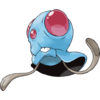 Tentacool Water Poison |
|
| #0949 |  Toedscruel Ground Grass |
|
#0073 | 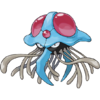 Tentacruel Water Poison |
|
| #0960 | 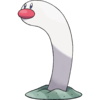 Wiglett Water |
|
#0050 | 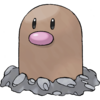 Diglett Ground |
|
| #0961 | 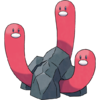 Wugtrio Water |
|
#0051 | 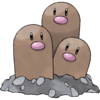 Dugtrio Ground |
|
| #???? |  Poltchageist Grass Ghost |
|
#0854 | 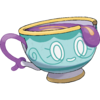 Sinistea Ghost |
|
Descriptions
The relationships between ecologically similar Pokémon have been described in Pokédex entries and other sources.
| Pokémon | Description |
|---|---|
 Toedscool |
Pokédex entry from Pokémon Violet:
|
 Wiglett |
Pokédex entry from Pokémon Violet:
Jacq's memo from the World Pokémon Ecological Society conference:
Official Pokémon Scarlet and Violet website:
|
 Wugtrio |
Pokédex entry from Pokémon Violet:
|
 Poltchageist |
Official Pokémon Scarlet and Violet website:
|
Base stats comparison
| Pokémon |  Toedscool |
 Toedscruel |
 Wiglett |
 Wugtrio | ||||
|---|---|---|---|---|---|---|---|---|
| HP |
|
|
|
| ||||
| Attack |
|
|
|
| ||||
| Defense |
|
|
|
| ||||
| Sp. Attack |
|
|
|
| ||||
| Sp. Defense |
|
|
|
| ||||
| Speed |
|
|
|
| ||||
| Total | 335 | 515 | 245 | 425 |
| Pokémon |  Tentacool |
 Tentacruel |
 Diglett |
 Dugtrio | ||||
|---|---|---|---|---|---|---|---|---|
| HP |
|
|
|
| ||||
| Attack |
|
|
|
| ||||
| Defense |
|
|
|
| ||||
| Sp. Attack |
|
|
|
| ||||
| Sp. Defense |
|
|
|
| ||||
| Speed |
|
|
|
| ||||
| Total | 335 | 515 | 265 | 425 |
Trivia
- The concept of ecologically similar Pokémon was first introduced with the reveal of Wiglett before the release of Pokémon Scarlet and Violet.[3]
- These Pokémon are similar to the Paradox Pokémon in that they bear a striking resemblance to certain Pokémon but are nonetheless completely different species.
- Some ecologically similar Pokémon have several unique distinctions:
- Poltchageist and Sinistea are the only ecologically similar Pokémon that share a type.
- Additionally, they are the only ones where the name of the newer Pokémon is not based on its original counterpart, but rather its evolved form; in this case, Polteageist.
- Wiglett and Diglett are the only ecologically similar Pokémon with different base stats.
- The Toedscool and Tentacool lines are the only ecologically similar Pokémon where the original counterparts are unavailable in Pokémon Scarlet and Violet.
- Poltchageist and Sinistea are the only ecologically similar Pokémon that share a type.
- In the code of Pokémon Scarlet and Violet, Toedscool and Toedscruel are referred to as "OKAKINGU" (hill king, from Koiking) and "OKAGYARADOSU" (hill Gyarados), respectively, suggesting that they replaced a scrapped idea of an evolution line based on the Magikarp family.
Origin
While these Pokémon are officially described as "ecologically similar"[1], it may be more accurate to describe them as "morphologically similar", as while they have similar physical characteristics, many of them occupy very different ecological niches. The concept has been compared to convergent evolution and parallel evolution in evolutionary biology, both of which can lead to separate organisms independently developing similar or identical characteristics and body plans.
In other languages
Though It May Closely Resemble Diglett, It’s a Completely Different Pokémon
| |||||||||||||||||||||||||||||||||||
Though Ecologically Similar to Sinistea, It’s a Completely Different Pokémon
| |||||||||||||||||||||||||||||
See also
References

|
This game-related article is part of Project Games, a Bulbapedia project that aims to write comprehensive articles on the Pokémon games. |